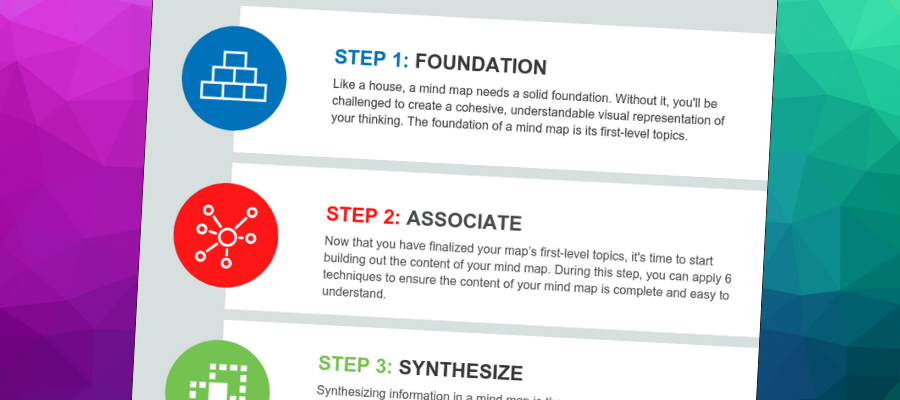
Many people struggle to understand how to use mind mapping software effectively. That’s what I’m hearing as I chat with users of mind mapping software and experts alike.
For example, I recently chatted with Nick Duffill, one of the smartest people I know when it comes to thinking about mind mapping at a deep level. He observes that most people build out the content of their mind maps, but are then scared to alter its structure in fundamental ways – such as moving a subtopic and all of its child topics to anew first-level position within the map.
They have complete freedom to rearrange topics and subtopics any way they want. But they tend to get “locked in” to the initial structure they created.
Then there’s the challenge of sharing your mind maps with others. When you create a map, you understand the meaning and context behind every topic, shape, color, icon and element you added to it. Others viewing it can only see the visible part of it. That means shared mind maps are often hard for others to understand.
Nick compares this to missing a meeting at work or a lecture at school and then asking a colleague who did attend it to send you their notes. No matter how diligent they were, their notes probably don’t capture all of the nuances of the meeting itself.
The bottom line is that it’s relatively easy to use mind mapping software to capture ideas. But it’s much more challenging to organize your thoughts and ideas and ways that are complete, cohesive and understandable to your future self and others on a consistent basis.
That’s why I created the FAST framework – to give you a simple and memorable process you can use to consistently create excellent mind maps.
But this framework still isn’t widely known. That’s why I created the infographic below, which provides a high-level overview of this simple 4-step process. You may want to print it out and post it to the wall of your work area.
If you want to go deeper – to learn about the specific tips and techniques that make it so effective, I offer a FAST framework online course here.
I hope you find this infographic to be valuable!


Leave a Reply